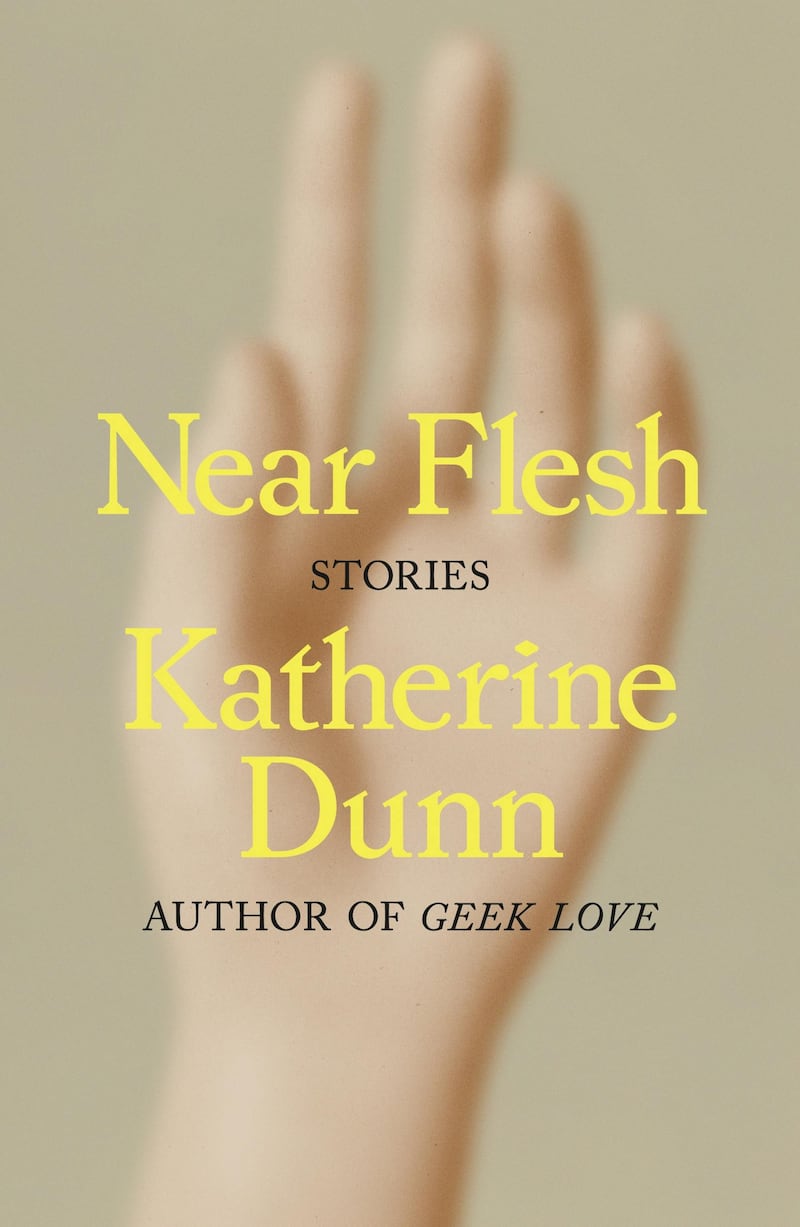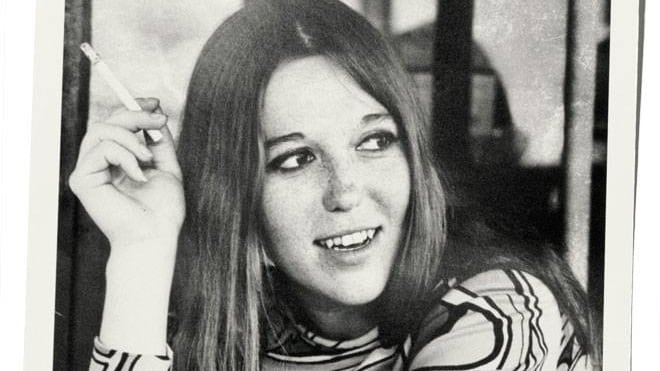Nearly a decade after her death—and only three years after the publication of her posthumous novel Toad—Katherine Dunn’s short story collection Near Flesh (Macmillan, 272 pages, $28) brings her singular sensibility back into the literary spotlight. Both longtime readers and newcomers will find the author’s fascination with the grotesque and macabre tempered by a prose style that is at once comforting, unsettling and darkly funny.
For those who have missed her voice, this collection (set for release Oct. 7) offers both the nostalgia of returning to familiar terrain and the delight of discovering work previously hidden in the archives.
Fans of her cult classic Geek Love will likely flock to this new collection, which blends a handful of previously published stories with a wealth of never-before-seen work. But for readers unfamiliar with Dunn, Near Flesh also offers a surprisingly strong introduction to her voice and obsessions. These stories span decades of her career, yet they feel strikingly cohesive, united by her recurring themes of bodily transformation, female interiority, and the uncanny lurking beneath everyday life.

As its title suggests, flesh is the unifying motif that runs through the collection. In “Pieces,” Dunn explores the disposal of amputated body parts and the unease surrounding their afterlife. “The Allies” reimagines an alien invasion in which young Ellie’s rotund body becomes a character unto itself, emphasizing Dunn’s interest in the physical self as more than just a vessel. The titular story unfolds as a darkly comic allegory about artificial intelligence, its implied sexuality, and the dangers of machines understanding human vulnerabilities too well. In the haunting vignette “I Had the Baby on My Left Hip,” a single bloody shoe speaks volumes to the reader while remaining a mystery to the narrator. Across these tales, flesh is never static; it is grotesque, comic, vulnerable or transcendent, depending on the angle of Dunn’s gaze.
Despite the grim subject matter, Dunn’s prose often softens the horror. Her sentences hum with rhythm and warmth, turning even the most gruesome images into strangely approachable narratives. These are stories that can be read quickly yet linger in the imagination, operating like fables or urban legends. She uses humor to undercut violence, tenderness to temper fear, and irony to illuminate truths. The result is fiction that dances in the liminal space between laughter, terror, sorrow, and startlingly relatable humanity.
The collection’s explorations of flesh are inventive and varied. In “The Well,” human skin shrivels in icy water, while in “The Flautist,” the body is portrayed as unreliable, a source of betrayal rather than power. In “The Education of Mrs. R,” characters confront the bloody realities of agricultural slaughter, forced to reconcile violence with necessity. Elsewhere, “Rhonda Discovers Art” follows a murderer who becomes obsessed with a performance artist staging near-death experiences, blurring the line between destruction and creation. And in “Screaming Angel,” Dunn revisits her passion for boxing, a subject she not only reported on in the 1980s but also practiced herself. Her boxing journalism eventually culminated in her 2009 anthology One Ring Circus: Dispatches from the World of Boxing, making this story feel like both a return to form and a farewell encore.
Naomi Huffman returned as Dunn’s posthumous editor from Toad. She selected and polished the 19 stories in Near Flesh, most of them written before Geek Love. The pieces carry Dunn’s signature preoccupations—motherhood, desire, psychological tension, and the strangeness lurking beneath the façade of American life. Huffman’s editing ensures that even unfinished or early drafts retain Dunn’s sharpness of voice, making the collection feel polished rather than pieced together.
Most of the protagonists here are women, consistent with Dunn’s body of work. Yet they are never one dimensional. Through them, Dunn explores the contradictions of female sexuality, the complexities of motherhood—from violent and spontaneous to mystical and wise—and the resilience of the human spirit in moments of despair. These stories reject the notion of simple heroines or villains; instead, they present complicated, contradictory figures whose humanity shines through even in grotesque circumstances. In effect, the book feels like something Dunn herself might have assembled, which makes reading it all the more poignant—if also unsettling.
Near Flesh may sound like literary necromancy to the uninitiated, but for devoted fans, it is pure Dunn—dark, funny, and compulsively readable. Even from beyond, her voice still cuts sharp. The collection reminds us why she remains one of Portland’s most treasured literary figures: a writer who found beauty in the grotesque, comedy in the horrific, and humanity in the most unlikely of places.

